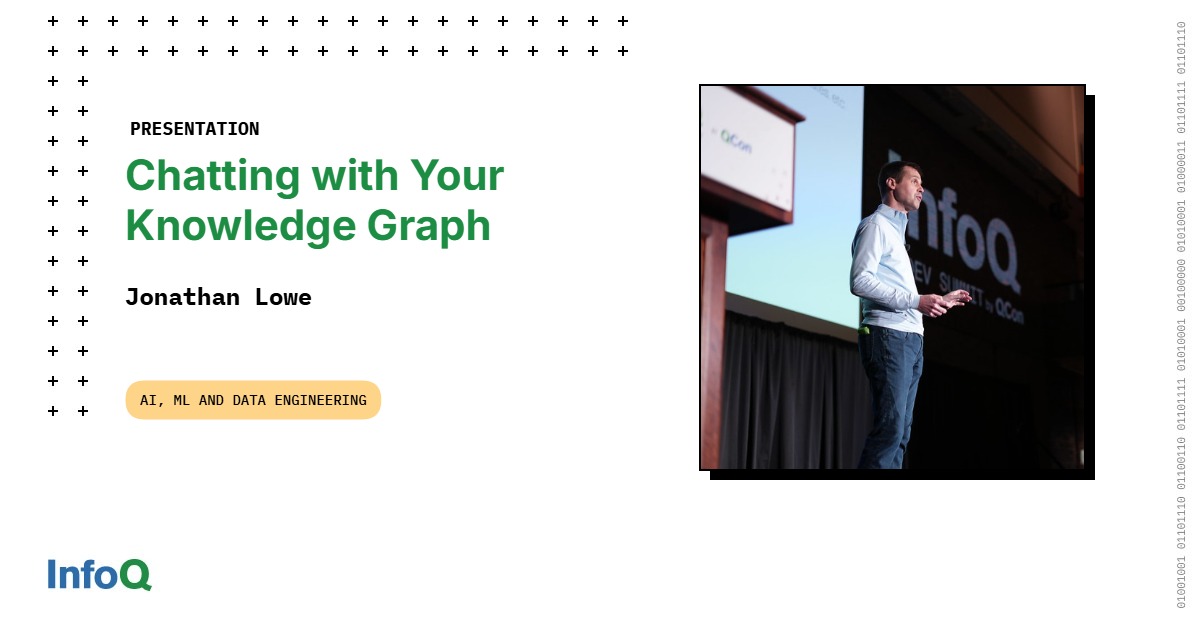Editor’s note: We sat down with Jeremy Jones, Global Head of Creative, to tap into his expert insights on turning content into business outcomes. This conversation is part of an exciting new series on our blog, so stay tuned for more thought leadership from top executives… 👀
“We get you and we got you.” Jeremy Jones, Global Head of Creative at Wink, Mailchimp’s in-house agency, has a knack for boiling down complex social strategy to its true essence: connect with your potential customers.
But how do you create great content that connect and achieve real business results? We chatted with the expert marketer to get a peek inside Mailchimp’s social playbook.
Prior to leading the creative powerhouse team at Mailchimp, Jones led teams at J. Walter Thompson and WPP. His work has been recognized by major award shows and featured in Fast Company and Wired.
Below, Jones shares how to measure social media success, the secret to staying top of mind in an attention economy, and exactly how Mailchimp develops and produces inspiring content that converts — with tips you can start using today.
1. Audience-centric content
Jones notes it’s crucial to understand the space you’re in. Whether you’re marketing paint to homeowners or driving donations to a non-profit aid organization, understanding your audience is a universal truth.
For Mailchimp, that often starts with social listening. “Social is such an untapped resource for insights,” Jones says.
In fact, many of Mailchimp’s content ideas start from a social media comment. Jones describes how their “Clustomer” campaign came to be:
“We heard people getting stuck on how to personalize content marketing to large audiences. So we visually brought this problem to life for the campaign. By not segmenting, they were creating a giant ball of people, and nothing was targeted.”
Jones continues, “as a result, it allowed us to show our audience we understand and empathize with them, but also that we have a solution for you.”
For all their campaigns, strategy and analytics are part of the content creation process from the beginning.
For the Clustomer campaign in particular, Mailchimp partnered with Ipsos to test the concept and storyboard before creating assets and scoring ad creative, ensuring the finished product would resonate with their audience
Google Analytics and social listening tools make it easy for you to turn deep insights into big wins. Discover upcoming trends before anyone else, know what people are saying about your brand (and how they feel), monitor mentions, and leverage AI to inform your social strategy with data-backed decisions.
While many of Mailchimp’s campaign ideas come from addressing customers’ painpoints, part of ensuring it resonates is tailoring content for each social platform.
When asked how Mailchimp maximizes reach and impact across platforms — if they plan formats and platforms in the strategy phase or re-edit content later — Jones says it’s a bit of both.
“When we go to market with a campaign or idea, we always think about how it will work across all platforms. But we also have teams in place that specialize in taking apart what we shoot and re-engineering it for each platform: short-form, vertical, horizontal, etc.”
2. B2B or B2C doesn’t matter
Instead of starting with preconceptions about what a B2B or B2C audience wants, always start with what you know to be true: you’re marketing to people.
“People tend to think B2B is boring or that ‘B2B people act differently.’ But at the end of the day, they’re just people. They watch movies, read books. To think about them differently is a disservice.”
Jones notes, “[At Mailchimp], we speak to them like normal people. It’s just understanding our audience and speaking to them like, ‘Hey, we get you.’ When they can see the wink in our work, it makes the connection that much stronger.”
3. Educational storytelling
As an organization “marketing digital marketing to marketers,” Jones notes their audience is more dialed into branding than many others.
Mailchimp keeps educational social media content engaging and actionable by:
- Using a professional studio for filming and art direction, so each video is consistently branded and visually high quality.
- Having the same people in videos to build familiarity and connection with the company.
- Focusing each video on solving a specific problem, so the value of each video is clear right away.
“It’s not for you, it’s for them. The more you remember that when creating content, the better it will perform,” Jones says.
By keeping educational content true to its brand and focused on solving its target audience’s pain points, Mailchimp builds not only a knowledge base but also a community through valuable content.
For example, educational content takes many forms at Mailchimp, from infographics and carousels:
To webinars and short-form video:
4. Embracing authenticity
Now that everyone has “access to mediocrity,” as Jones puts it, the ideas behind your campaigns matter more than ever.
“You still have to have that human element to put it over the edge, AI gets you 85% of the way there. And then you’ve got to have that human touch, to get it over the edge,” says Jones.
Mailchimp regularly shares insights from creative team members, making truly unique and authentic content that showcases their best brand assets: their employees.
5. Community engagement and feedback
“Dialogue is not blasting out social content,” Jones says. To build a real community, the conversation has to go both ways.
Mailchimp regularly asks its community for feedback on social media through polls, Q&A sessions, and comments. They incorporate this feedback into their future content marketing strategy and product ideas.
For example, Mailchimp hosts conferences around the world to uplevel customers’ results and share new features based on direct customer feedback.
Mailchimp Presents is the epicenter of their content, specifically designed to build community. As Jones puts it, the goal is to, “get people unstuck if they’re in a rut,” and to inspire and entertain.
Though, he shares that it took a little bit for the Mailchimp Presents series to find its fit. “When we started, the net was a little wide. We learned how to take feedback as we went. Marketers loved the inspiration, but needed more relevance. So we worked on fine-tuning that for each future production.
For example, the Subcultural podcast series is a sweet spot for understanding subcultures and genres from a real expert, Dr. Michael Collins, that marketers can be entertained by and use in their work.”
The results? Turns out, creativity and community building have big business impacts: Mailchimp Presents has added over two million new leads, according to Jones.
9 tips on building a results-driven content strategy, according to Jeremy Jones
1. “Treat your content like a TV studio”
Instead of viewing yourself as an advertiser, Jones advises thinking of your content marketing team as creators of a television show.
“For brands, the more you can think of yourself as a creator or writing room, the better. It’s such a different vibe than thinking, ‘This is gonna be an ad put in front of people.’ You need to create a mini-studio.”
Let creativity be your starting point, not which ad group or platform the piece will live on.
2. Focus on community first
Authentically wanting to serve your audience will always shine through. Focus on building community first and results will come.
Can you build a huge following on social media without building a real sense of community? Of course.
But does your follower count, CTA clicks, or even conversion rate determine your social media success? Nope.
Focus on making content that genuinely connects and addresses your audience’s pain points, and the rest will come.
3. Foster collaboration
Creating the perfect balance of brand integrity, exciting creativity, and measurable business results is no accident. It’s in place from the beginning with what Jones calls the “three-legged stool” approach.
You need everyone at the table. For every campaign, our creative, marketing, and analytics teams are all part of it from the brief all the way through to execution. The teams are embedded together in pods, always in communication. We feel like collaboration makes our work better.
4. Continuous learning and adaptation
“We’re always trying to beat our best. It’s an internal mantra. Our goals are often in response to driving larger KPIs — sales, site visits, conversions, etc.
We’re also looking for smaller signals: when someone snaps a picture of something physical we’ve done and puts it on social media, for example. It allows us to join the conversation and scale that work.
Little nuggets people pull from our posts mean more than a click or a conversion,” says Jones.
For paid social media campaigns, Mailchimp experiments in a “creative sandbox,” as Jones calls it:
“We want to take the performance learnings and double down, and not always rely on automated [ad] algorithms to make decisions.”
He continues, “This sandbox allows us to experiment in real time. We take different hypotheses, throw it into a real world ad, and get feedback.”
While automated ad campaigns can produce good results for businesses, especially those just getting started with social media advertising, Jones notes that after manually tweaking ads in their sandbox for six months, ad click-through rate increased by 300%.
“We want to tinker and learn. The more we tinker, the more we get those incremental results.”
5. Consistency matters
It’s still true that consistency is key for social media success. But not everything has to be consistent.
“Everyone wants to chase a fad or meme or trend and mimic what’s out there, but you really have to be you,” Jones shares.
“Have a distinct voice and don’t deviate from it. When people understand your voice, you become part of their world, and they understand who you are. If you move around too much, they won’t connect.
Your content can be experimental, but your brand must stay consistent.”
6. Know your core message
Not every piece of social media content you create has to have a call-to-action, but your core message is part of your value proposition and is always underpinning everything.
For Mailchimp, that’s reminding audiences that social platforms and SEO rankings come and go, but an email inbox is a direct line to customers — and Mailchimp’s email marketing platform can help them optimize conversions.
7. Use AI to produce better content — not all your content
Jones is quick to praise AI tools and their capabilities, but reminds marketers that “they’re just the new baseline.”
“We use AI to produce faster. But creativity needs to be factored in so that you stand out above the rest. For our Popup Like It’s Hot campaign, we shot all the models and photography in real life, but used AI to do things we couldn’t before, like making the still images lip sync the lyrics.
On set, we took the stills and fed them into AI to see if what we wanted would work in real-time, like an on-set assistant. This drastically sped up our shoot with the confidence we had what we needed, eliminating re-shoots and potential setbacks,” says Jones.
8. Lean into trends, but don’t be defined by them
The team at Mailchimp is leaning more into text content after seeing an upswing in engagement and results from text-focused posts and platforms.
“It sounds so simple, but it works: Have a simple, clear tone of voice and be timely with text posts. We’ve started leaning into Threads more due to success we’ve seen there. Show empathy, make people smile, and be authentic with your words.” Jones notes.
You don’t need to shift your entire social media strategy based on recent wins, but make sure to explore opportunities, whether that’s a post format that’s performing well for you, a specific platform, or anything else that’s having a “moment.”
9. Experiment… a lot
Experiment often. Don’t be afraid to fail. You’re always going to learn something you can apply to make things better.
Part of experimentation can include reacting quickly to trends, even if it’s not your usual type of content.
For example, right after Maurizio Cattelan sold his “banana taped to the wall” artwork for $6.2 million USD, two Mailchimpers ran to the studio, taped up one of their chimp mascot dolls, wrote a quick caption, and posted it.
The result? What took two people less than five minutes to make earned 23,000+ likes, coverage in AdAge, and plenty of community-building laughs in the comments.
Jones described the viral hit as, “Just being relevant and a close connection to something that happened in culture. Keeping it simple and timely is the key.”
Key takeaways
- Start building a genuine community on social media first, not worrying about follower counts or validation metrics.
- Building community means listening to customer feedback and keeping the dialogue open.
- Social listening tools help you plan and create attention-grabbing, readability-optimized content that converts.
- Case studies, templates, and compelling headlines help you create good content that drives desired action.
- Thinking of your content marketing team as a “creative studio” or “TV writer’s room” will yield more creative results.
- Every piece of content doesn’t need to be perfect: a clear message is more important than polished visuals.
- Understand the space you’re in — social media is an attention economy, and you’re competing against everyone, not just your industry competitors.
Make everything you do on social media easier with Hootsuite. From publishing and scheduling to social listening, engagement, ads, and industry-leading analytics, Hootsuite is your entire social media strategy in one easy-to-use dashboard. Try it free today.










